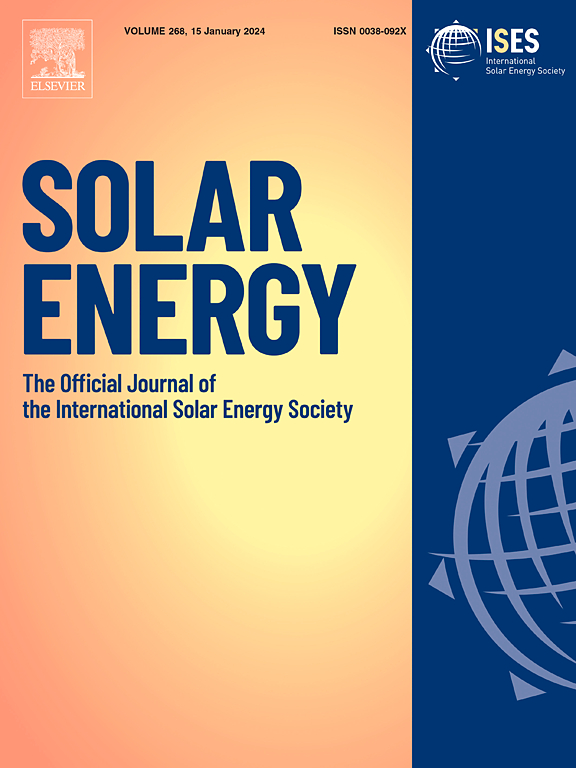跨季节太阳能吸收储能系统全生命周期环境影响与能源利用评价
IF 6
2区 工程技术
Q2 ENERGY & FUELS
引用次数: 0
摘要
在太阳能应用领域,可靠和高效的储能系统的进步在使太阳能可用性与消费需求保持一致方面起着关键作用。基于吸收式蓄能原理,设计了一种跨季节太阳能吸收式蓄能供热系统。该系统储存夏季太阳能用于冬季室内供暖,减少夏季太阳能的浪费,实现剃峰和填谷。本文阐述了ISAES系统的组成和工作原理,建立了系统各组成部分的MATLAB模型,分析了系统的动态特性,并以生命周期评价(LCA)理论为基础,从可持续影响和资源利用两个方面进行了全面的生命周期分析。分析比较了ISAES系统与燃气锅炉(GFB)系统在生产、运输、运行和处置的各个阶段。结果表明,该体系的能量存储容量为150.78 kWh/m3,结晶速率为0.165。与传统的显热蓄热和潜热蓄热相比,系统的蓄热密度分别提高了1.88 ~ 5倍和1.82倍。此外,在整个生命周期内,与GFB系统相比,ISAES系统减少了37.87%的环境影响和62.85%的能耗。其中,全球变暖潜势(GWP)下降63.18%,酸化潜势(AP)下降35.2%,可吸入颗粒物潜势(REP)下降25.12%。此外,对两种系统的综合效益分析表明,ISEAS系统具有更高的综合效益。本文章由计算机程序翻译,如有差异,请以英文原文为准。
Assessment of full life cycle environmental impact and energy utilization in an interseasonal solar absorption energy storage system
In the realm of solar energy applications, the advancement of reliable and efficient energy storage systems plays a pivotal part in aligning solar energy availability with consumption requirements. Based on the principle of absorption energy storage, this study designs an interseasonal solar absorption energy storage heating system (ISAES). The system stores summer solar energy for winter indoor heating, reducing solar energy wastage during summer and achieving peak-shaving and valley-filling. This paper elaborates on the composition and working principles of the ISAES system, establishes MATLAB models of its components, and analyzes the dynamic characteristics, and performs comprehensive life cycle analyses, focusing on sustainability impacts and resource usage, grounded in the principles of Life Cycle Assessment (LCA) theory. The analysis compares the ISAES system with a gas-fired boiler (GFB) system across the stages of production, transportation, operation, and disposal. The findings indicate the system attains a storage capacity for energy of 150.78 kWh/m3 and a crystallization rate of 0.165. Compared with conventional sensible heat storage and latent heat storage, the storage density of the system is increased by 1.88 ∼ 5 times and 1.82 times, respectively. In addition, over the lifecycle, compared to the GFB system, the ISAES system reduces environmental impact by 37.87 % and energy consumption by 62.85 %. Specifically, global warming potential (GWP) decreases by 63.18 %, acidification potential (AP) by 35.2 %, and respirable particulate matter potential (REP) by 25.12 %. Furthermore, an analysis of the comprehensive benefits of both systems reveals that the ISEAS system boasts superior overall benefits.
求助全文
通过发布文献求助,成功后即可免费获取论文全文。
去求助
来源期刊

Solar Energy
工程技术-能源与燃料
CiteScore
13.90
自引率
9.00%
发文量
0
审稿时长
47 days
期刊介绍:
Solar Energy welcomes manuscripts presenting information not previously published in journals on any aspect of solar energy research, development, application, measurement or policy. The term "solar energy" in this context includes the indirect uses such as wind energy and biomass
 求助内容:
求助内容: 应助结果提醒方式:
应助结果提醒方式:


